Though many of its buildings are of mediaeval origin, Cambridge is notable for its diverse architectural styles that span a number of centuries. There are a number of quite interesting “modern” ones, some of which we have snapped when out and about.
This building, which is home to our bank, was built around 1890-93, is considered an unusual building for Cambridge. It was originally part of Foster’s Bank, which was founded by Richard and Ebenezer Foster, who were wealthy mill owners at the time.
The interior is quite striking, as it is beautifully tiled throughout, and has a dome slightly reminiscent of St Paul’s Cathedral.
This inscription is found on the wall of the old London County Bank, which was built in 1867. No longer a bank, it has been taken over by Corpus Christi College.
The Grafton Centre, which is a place we regularly visit for various household supplies, is described by the Cambridge 2000 project as a shopping centre that, like other shopping centres, is one of a group that is largely the same all over the world, and although popular, lacks character! We thought we would include it as a regular place for the regular people of Cambridge to shop. You can see it at the very end of the mall in the photo below. It does, however, house a very atmospheric Italian restaurant that makes excellent duck confit.
One of the oldest places in Cambridge is Cambridge Castle. Originally an iron age fort, it was first used as a garrison by the Romans and then fortified by William the Conqueror. Under Edward I, it was rebuilt in stone and contained a garrison, gaol, and a nominal residence for the king. By Tudor times, it was considered redundant, and much of its stone was removed by Henry VIII and used for the building of King’s College. What was left was then sold off to various Cambridge Colleges and churches by Elizabeth I. Now it looks much like an overly large grass hill, guarding the entrance to the current County Hall.
Another fairly ancient building is that of St Bene’ts Church, which has an intact Saxon tower from the original church building. The earliest part is dated from around 1025; the latest was built in the 19th century. The Saxon tower was made largely of river stones, and is quite distinct from its surrounding Norman (and later) counterparts.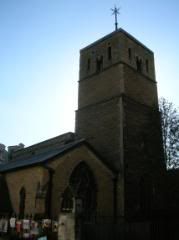
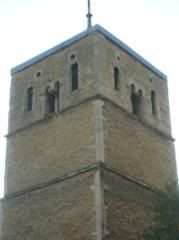
To return to Cambridge’s Tudor heritage, we have discovered a number of Tudor buildings throughout the city which we like very much. And what better way (person?) to introduce these than the redoubtable Henry VIII, who stands in perpetual guard over the famous King’s College?
Below are two tudor houses, one which is covered in a delightful autumn-coloured vine.
We also discovered colourful floral displays in this street (Mill Rd), which we visited last Saturday. For Elizabeth, the best discovery (apart from the antique stores) was a decent Chinese restaurant, which we had lunch at.
Another small tudor building with lots of character is one of the pubs close to our street.
Named “Cambridge of the Thames” it puts itself forward as a traditional gentleman’s pub. We were very taken by the sign on its left hand side, which reads:
“This HOUSE is dedicated to those splendid FELLOWS who make DRINKING a pleasure, who reach CONTENTMENT before CAPACITY, and who, whatever the DRINK, can TAKE it, HOLD it, ENJOY it, and still remain GENTLEMEN.”
Another fine example of Tudor architecture (built 1600s) is the old Guild Hall building, which sits amidst some of the more recent buildings near the centre of the city. It was formerly an inn, but has been the home of the Cambridge University Catholic Chaplaincy since 1924.
(Information from Cambridge 2000 website at http://www.cambridge2000.com/cambridge2000/html/0009/P9112494.html)
The new Guildhall is descried on the Cambridge 2000 website as “not a very interesting building, occupied by the city government. It was built in two stages. The only reason most people would go inside is to visit the planning application department.” Well, we actually went inside it for another reason – to visit the Tourist Information Centre!! It is certainly more modern and sleek in its design, and looks quite different in comparison to the largely ancient buildings that surround it.
The Guildhall is close to the Cambridge marketplace, and one interesting landmark that certainly doesn’t lack character is the Cornish Pasty Co. Pub man, who stands on his balcony day and night observing the market place of Cambridge. This pub is famous for its Cornish pasties, and on weekends the queues to purchase these wind through the pub and out the door.
During one of our many forays into the marketplace we discovered two unusual things. One is the Romanesque cauliflower, which is grown in Cambridgeshire on the local fen farms. This seriously weird-looking brassica actually tastes quite delicious, though it was intimidating to have to actually cook one for the first time.
Our other unusual discovery was at the market fishmonger. Two of the biggest prawns I have ever seen were behind his counter. Variously known as jumbo prawns, giant tiger prawns and Madagascan prawns, these prawns were nearly a foot long. Apparently this species (Penaeus Monodan) can grow to 36cm long. On the advice of the fishmonger, we cooked them in garlic and cream, and they were delicious.
Our last photo has nothing to do with buildings or food (unless you are a Southern American and like certain southern fried small animals). It is one of Cambridge’s non-human inhabitants, the grey squirrel. We found this one foraging under a tree in Christ’s Pieces in the autumn sun. He was quite affable until we tried to get too close to snap his photo.

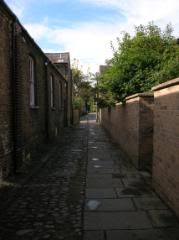

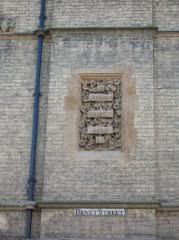

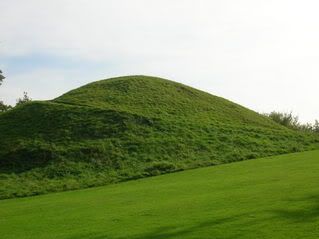
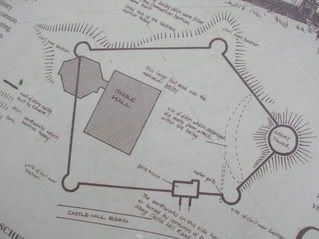
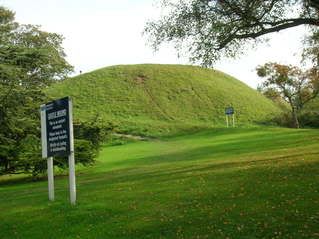
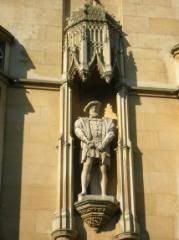
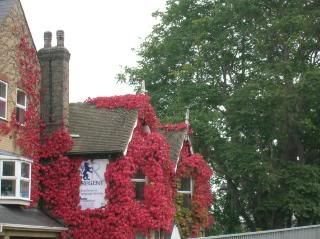
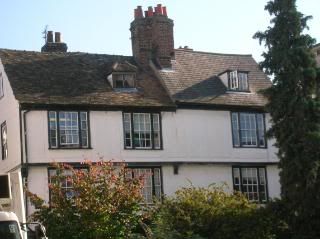
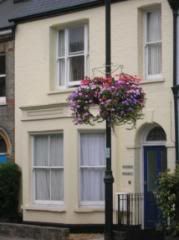
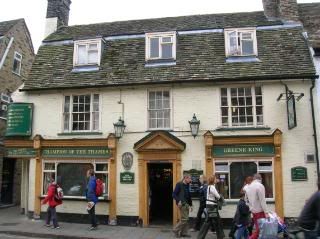
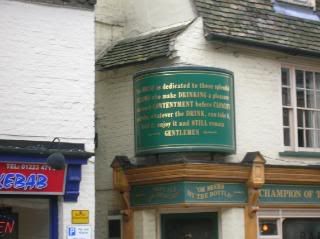

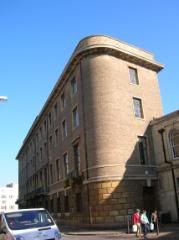
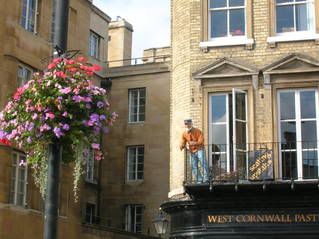

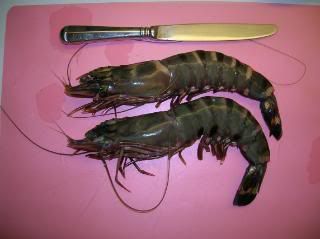
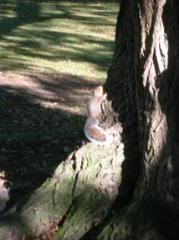

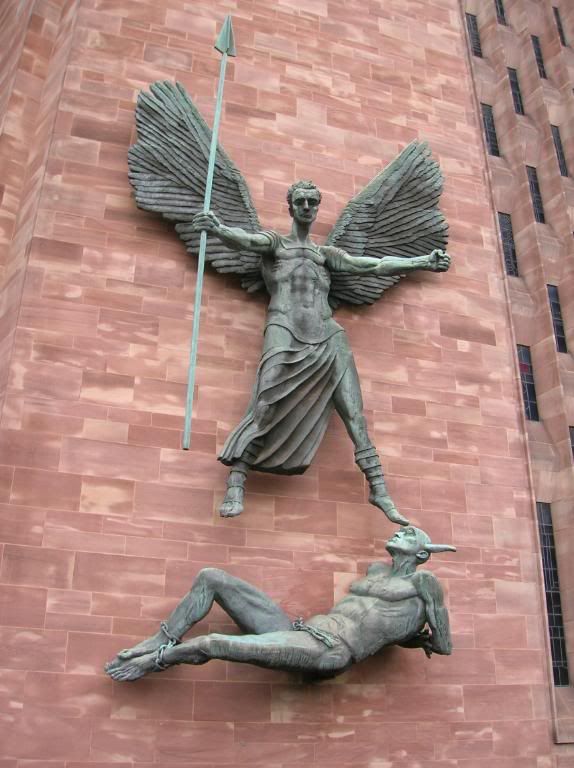

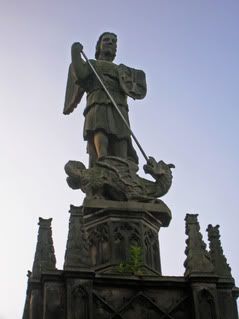
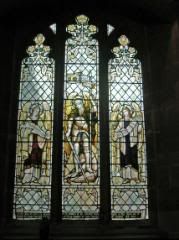
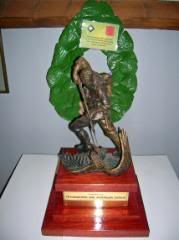


No comments:
Post a Comment